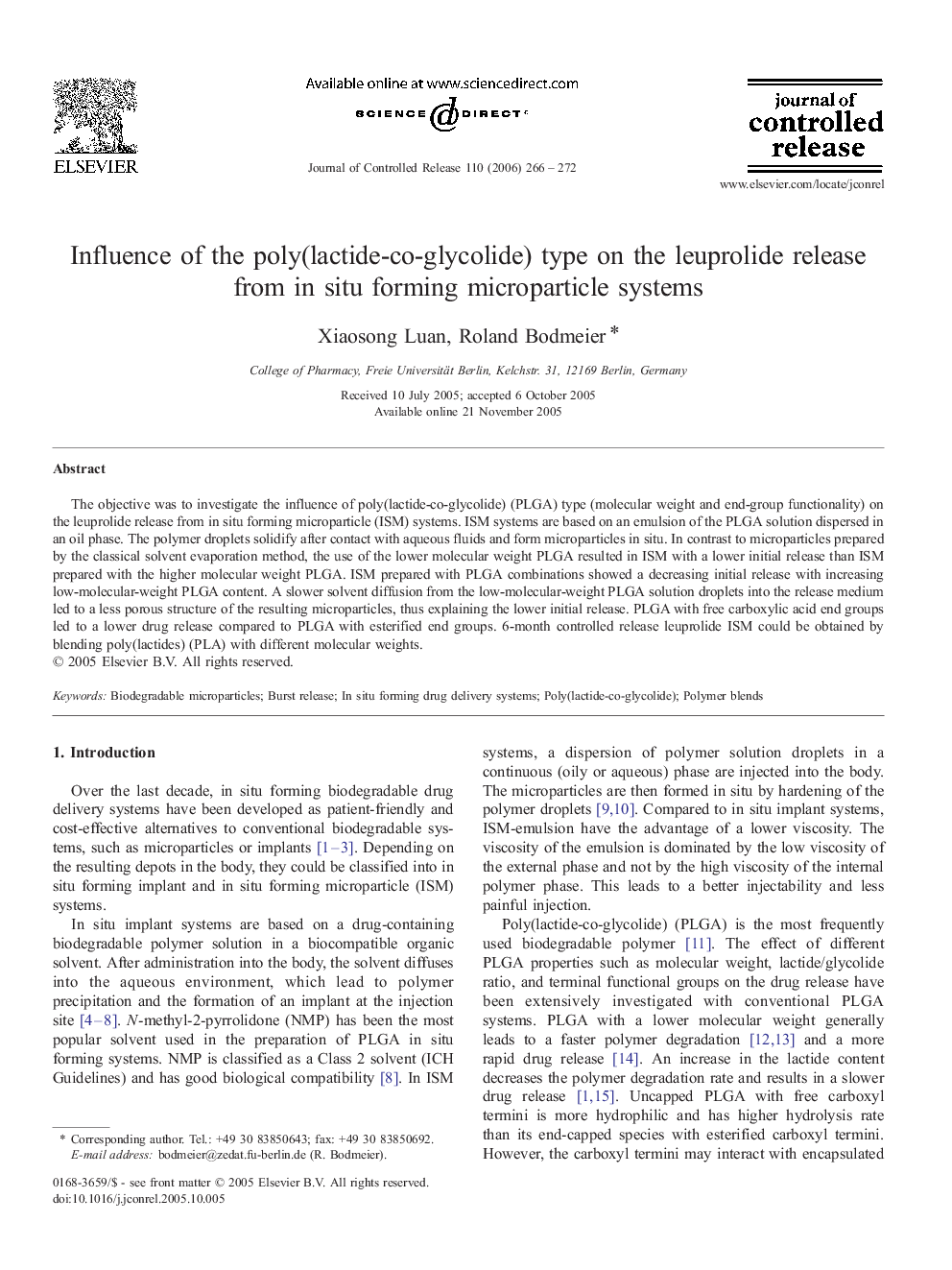| Article ID | Journal | Published Year | Pages | File Type |
|---|---|---|---|---|
| 1427726 | Journal of Controlled Release | 2006 | 7 Pages |
The objective was to investigate the influence of poly(lactide-co-glycolide) (PLGA) type (molecular weight and end-group functionality) on the leuprolide release from in situ forming microparticle (ISM) systems. ISM systems are based on an emulsion of the PLGA solution dispersed in an oil phase. The polymer droplets solidify after contact with aqueous fluids and form microparticles in situ. In contrast to microparticles prepared by the classical solvent evaporation method, the use of the lower molecular weight PLGA resulted in ISM with a lower initial release than ISM prepared with the higher molecular weight PLGA. ISM prepared with PLGA combinations showed a decreasing initial release with increasing low-molecular-weight PLGA content. A slower solvent diffusion from the low-molecular-weight PLGA solution droplets into the release medium led to a less porous structure of the resulting microparticles, thus explaining the lower initial release. PLGA with free carboxylic acid end groups led to a lower drug release compared to PLGA with esterified end groups. 6-month controlled release leuprolide ISM could be obtained by blending poly(lactides) (PLA) with different molecular weights.
